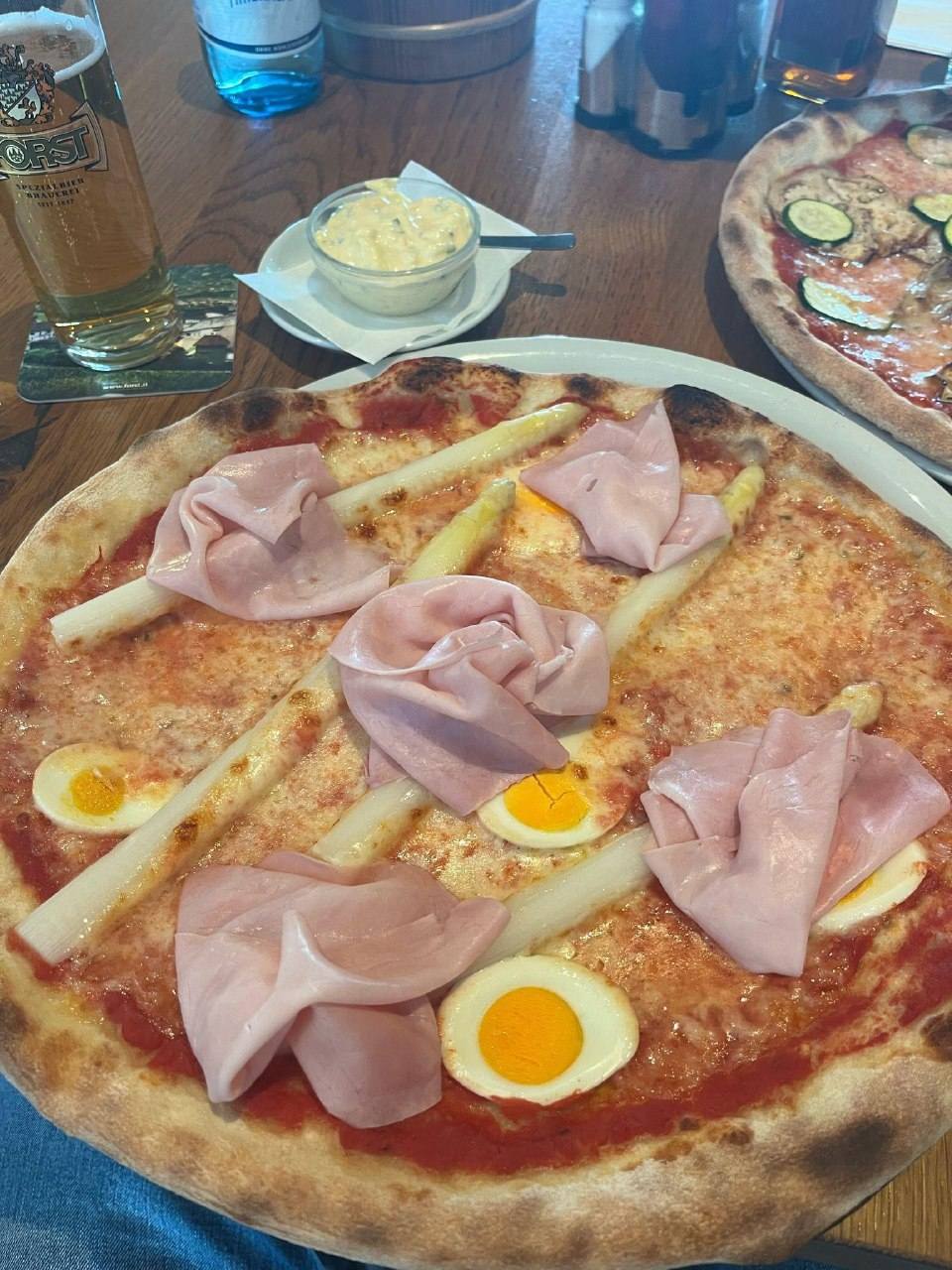ADVERTISEMENT
**Asparagus** and **hollandaise sauce** are ingredients that are commonly associated with more refined meals, often served as part of a **brunch** or as a side dish. Combining these ingredients with the casual, hand-held nature of pizza creates a stark contrast in expectations. The richness of hollandaise sauce, typically paired with upscale dishes like **eggs Benedict**, may seem at odds with the hearty, grab-and-go nature of a pizza.
#### 2. The Risk of Overcomplicating Simplicity
One of the reasons why pizza is so universally loved is because of its **simplicity**. It’s a dish that doesn’t need to be overly complicated to be delicious. A **classic margherita pizza** with **tomato sauce**, **mozzarella**, and **fresh basil** showcases the beauty of minimalism. It’s simple yet flavorful, with ingredients that sing in harmony with each other.
The inclusion of **hollandaise sauce**, with its rich and buttery flavor, threatens to overshadow the simplicity that many pizza lovers crave. When combined with the fresh, grassy notes of **asparagus** and the salty depth of **ham**, the pizza risks becoming a culinary **overload**—a dish that is no longer easy to eat, but rather one that requires more consideration than one might expect from a classic pizza experience.
#### 3. Balancing Richness and Freshness
A good pizza requires balance—richness from cheese and sauces, but also **freshness** from vegetables and herbs. The asparagus, although fresh, is often paired with a sauce that is both creamy and rich. This richness can be overwhelming, especially when it competes with the cheese and any other sauces already present on the pizza. When combined with the **saltiness of the ham**, the pizza could quickly veer into uncharted territory, where each bite seems to clash with the next.
Asparagus itself is a vegetable that can have a somewhat bitter undertone, which could conflict with the creamy, tangy flavor of the hollandaise. Ham, which is inherently salty and fatty, might not be the ideal counterpart to this combination of vegetables and sauces. What results is a pizza that has an **unbalanced** taste profile—a dish that lacks cohesion and leaves some people wondering if the experiment was a failure.
—
### Analyzing the Art of Pizza Innovation
Despite the backlash from some critics, it is important to acknowledge the role that **pizza innovation** plays in the culinary world. Many of the most famous pizza combinations we enjoy today began as unconventional experiments. The **Hawaiian pizza**, for example, introduced the controversial pairing of **pineapple and ham**, which has become a mainstay on pizza menus worldwide. Similarly, the combination of **figs** and **prosciutto** or **barbecue sauce** with **chicken** are just a few examples of how chefs and home cooks alike have taken liberties with the classic pizza formula to create bold new flavors.
Pizza, as a food genre, thrives on experimentation. And while some combinations may fall flat, others might eventually make their way into the mainstream. After all, innovation is often about **trial and error**—it’s about pushing boundaries and discovering new flavor profiles.
#### The Fine Line Between Genius and Disaster
The line between genius and disaster is often thin when it comes to culinary innovation. What seems like an odd combination at first—**asparagus**, **hollandaise**, and **ham**—could, with the right execution, surprise diners with a delightful balance of flavors. Alternatively, it could result in a pizza that’s too rich, too heavy, and ultimately unsatisfying. The difference between success and failure comes down to factors like **ingredient quality**, **preparation**, and **balance**.
#### Is This Pizza a Genius Creation?
Could this pizza be a creative masterpiece, waiting for the right audience to appreciate its innovation? Some might say that this unique combination of ingredients has the potential to appeal to foodies and adventurous eaters who enjoy exploring new tastes and flavors. For others, it will remain a “diabolical” creation—a bridge too far for the traditional pizza lover.
—
### Conclusion: The Beauty of Pizza’s Boundless Creativity
Pizza is an incredibly versatile dish that welcomes innovation, but sometimes the classics are the best. As with any bold culinary experiment, some combinations will work, and others won’t. The **asparagus, hollandaise sauce, and ham pizza** may not be for everyone, but it is part of the larger trend of **creativity** and **experimentation** that continues to evolve the way we enjoy pizza.
Whether or not this pizza becomes a mainstream favorite remains to be seen. But one thing is certain—**pizza will continue to evolve**, and with that evolution comes the potential for both genius and disaster. In the world of pizza, no topping combination is off-limits, but it’s up to the eater to decide whether this combination falls into the “delicious” or “diabolical” category.
For now, it’s safe to say that some of us will continue to enjoy our classic pizzas, while others might just be ready to take the plunge into this controversial creation. As with all culinary adventures, only time will tell if the asparagus, hollandaise, and ham pizza will rise to culinary stardom—or fall flat in the face of more traditional pizza fans.
